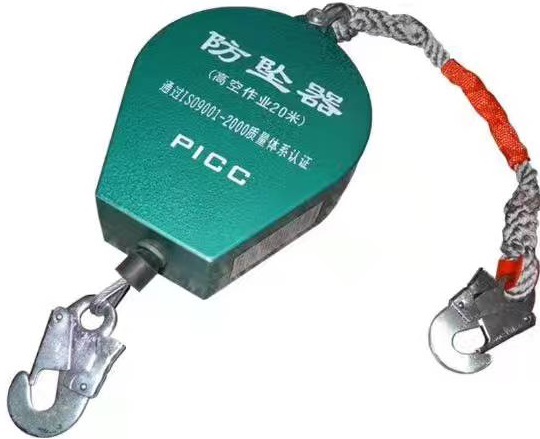
Customized Durable 1.25m Retractable Tool Protection Safety Lanyard Fall Arrester
Keyword:Fall arrester Time:2019-11-8 18:28:35
Braking process of wire rope fall arrester
There are many drawbacks in the traditional fall arrester. Using the test method based on virtual technology of comprehensive safety fall arrester tester, no-load and heavy-load decoupling test can be carried out on the auxiliary shaft fall arrester. Accurate braking deceleration and empty travel time can be obtained through the test curve, and the performance of fall arrester can be accurately judged, so as to improve the safe operation of the mine. For scientific protection.
The calculation of the braking force produced by the buffer in the braking process of the wire rope fall arrester system and the optimization and improvement of the two adjustment methods of the wire rope fall arrester are carried out.
To improve the safety of mine hoist in working process. The braking force of the traditional fall arrester is realized by the braking spring in the working process. When the lifting rope is disconnected, the braking spring acts immediately, thus starting the catcher to quickly grasp the braking rope and braking through the buffer.
However, due to the rapid occurrence of braking process, resulting in greater impact of braking process speed, which is more harmful to the safety of fall arrester lifting equipment and staff. By applying damping to the catcher of the anti-falling safety device, the grasping force of the catcher increases steadily, so as to make the catching process work smoothly. At the same time, the working method and installation position of the buffer are changed so as to realize the smooth and safe braking process.
The critical velocity of the buffer rope pulled out at the capture position of the anti-falling brake rope is calculated. The critical velocity curves at different capture positions are different.The smaller the mass of the fall arrester is, the greater the critical speed required to reach the buffer condition when the buffer rope is pulled out; the longer the brake rope above the capture point, the greater the critical speed, but the smaller the increase is. Therefore, in the analysis and evaluation of the anti-falling buffer braking performance of the fall arrester, it is necessary to determine the quality of the fall arrester and internal materials, the catching distance and the falling speed of the fall arrester, and then determine whether the buffer rope is pulled and whether the brake rope is relaxed.
The critical velocity curve corresponding to the separation point is obtained by analyzing the critical velocity of the buffer rope pulled out under the tension and relaxation of the brake rope. From the above curves, it can be seen that the critical velocity obtained by the brake rope tension and relaxation impact model at the separation point is basically the same. The impact dynamics of the brake rope is analyzed by the impact mechanics model of the brake rope. The formula of separation point can be used to select approximately.
If the length of the brake rope above the speed difference fall arrester is less than 1s, the brake rope tension impact mechanics model can be used; if 1 > ls, the relaxation impact mechanics model of the brake rope can be used. According to the selection method of the above impact model, the critical speed of the buffer rope pulled out by the light fall arrester and the heavy fall arrester at different locations of the brake rope can be calculated. Calculations show that the smaller the mass of the safety fall arrester, the greater the critical speed required to reach the buffer condition when the buffer rope is pulled out; and the longer the brake rope above the capture point, the greater the critical speed.


- No information
-
1. Design objective of electronic crane scale network management. (1) Adopt advanced distributed data processing techno…
-
Electronic crane scale bearing platform installation to focus Electronic crane scale can be installed generally on the li…


